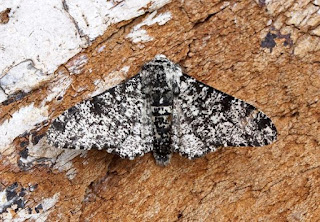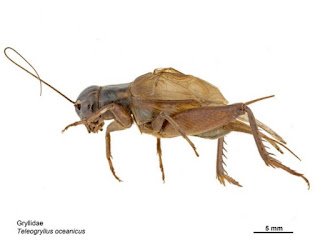The Peppered Moth: Icon for Creation
Through indoctrination classes, Darwinian propaganda documentaries, and other places, many people have heard of how peppered moths were solid evidence for evolution. Light moths on dark backgrounds became bird chow while dark moths did well. Indeed, H.B. Kettlewell said that the Bearded Buddha would have been happy to see this.
However, Kettlewell was a #liar4darwin. Despite the fraud in his videos and photos, this fake news is still in textbooks. (So are the fraudulent embryonic recapitulation drawings by Haeckel the Jackal.) I am once again asking why, if there is so much solid evidence for the "fact" of evolution, do they need dishonesty to promote it?
 |
| 1931 peppered moth image source: Flickr / Ben Sale (CC BY 2.0) |
For one thing, moveable DNA seems to be the reason some moths express dark colorization. In addition, the caterpillars of these moths actually change their colors and behavior to blend into their surroundings. Our Creator told creatures to reproduce after their kinds, not to turn into something else. No evolution to see here.
During the industrial revolution in the mid-nineteenth century, parts of England were notorious for air pollution. The pollution was so bad that it darkened tree trunks, both by killing the light-coloured lichens on their bark, and through directly blackening the trunks with soot. Eventually, somebody noticed that the dark variety of moth had become more common than the light variety.
Evolutionists claimed this was because the light-coloured moths stood out against the darkened tree trunks and thus were more easily seen (and eaten) by birds.
The phrase ‘industrial melanism’ for this was born, and peppered moths soon gained the reputation of being a showcase example of evolution by natural selection in action.
To read this startling article in its entirety, fly over to "Reclaiming the peppered moth". Some additional links to help you get this subject glued down are at "Industrial Melanism and Peppered Moths" and "The Peppered Moth and Evolutionary Fake News". Don't go too far, though. I'd be much obliged if you'd come back for another article refuting the "natural selection is evolution" claim.
Ever been kept awake by a lone cricket "chirping"? (For me, a few are annoying, but a field full is ignorable. Strange, I know.) Mayhaps you even tried the sometimes-almost-accurate method of counting the chirps made in 15 seconds, adding 40, then seeing if it gave you the temperature in Fahrenheit.
 |
| Credit: Wikimedia Commons / Pest and Disease Image Library (CC BY 3.0 AU) |
Not much chirping happening on the Hawaiian island of Kauai. Predators have pretty much silenced the crickets. That doesn't mean that they killed them all off, because those that remained silent survived and made more silent crickets. Once again, this example of natural selection was hailed as evidence of evolution. Hail Darwin! Blessed be! Once again, this critter is disqualified as something that evolved.
In the 1990s, a deadly parasitic fly arrived from North America. This “acoustically orienting” fly tracks down male crickets calling for mates (only male crickets chirp) and deposits its eggs on them. The larvae burrow into the cricket and devour it—a week later, the cricket is dead.
. . .
On closer examination, “virtually all” of Kauai’s male crickets were found to have wings more like female wings than normal male wings, i.e. “lacking the normal stridulatory apparatus of file and scraper required for sound production”—hence why they couldn’t chirp. In normal males, the wings have a prominent toothy vein that is scraped to make sound. But now, in most males the vein was smaller and in a different position. Females don’t have the toothed vein at all.
Not surprisingly, this discovery was heralded by many media organizations and the researchers themselves as ‘evolution’. “This is seeing evolution at work,” lead researcher Marlene Zuk said. But the information they themselves provided about the observed facts of the case (as opposed to evolutionary interpretation) was sufficient to show that it is not ‘evolution’ at all, in the chemicals-to-cells-to-crickets sense, which requires an increase in complexity and genetic information. Rather, there has been a loss of information (the ability to chirp) because of degradation of the genome.
To read the full article, jump to "Kauai’s silent nights (the crickets have gone quiet)". While you're primed for the subject, here's a bonus article: "Dear deer—when white ‘mutants’ have a selective advantage".